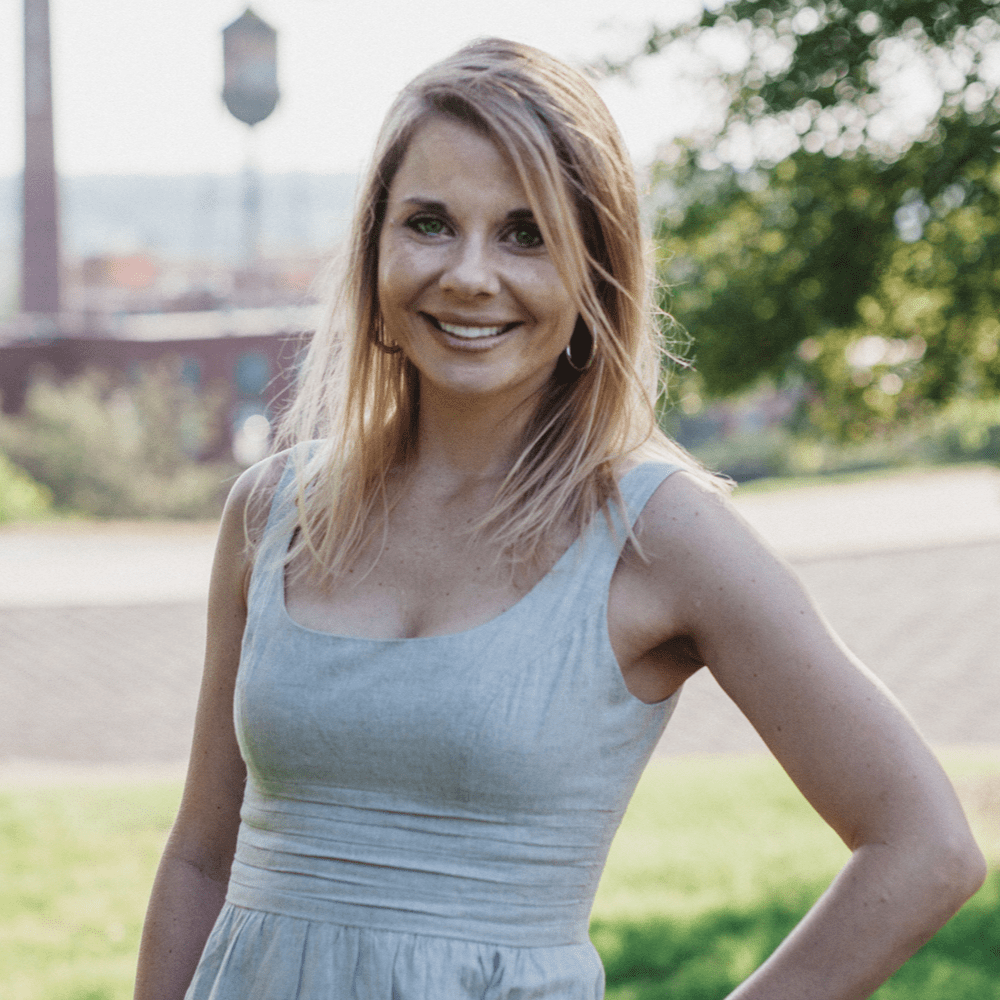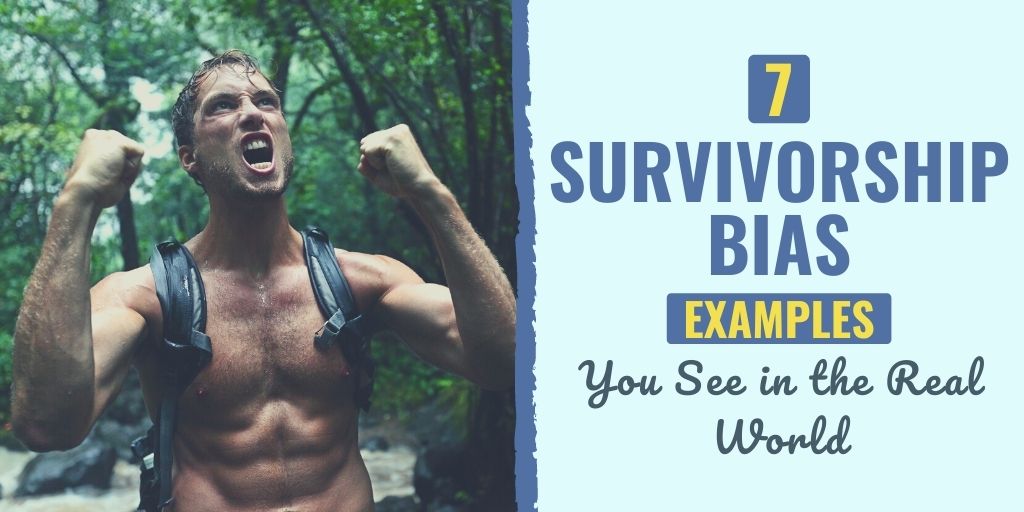Whenever there’s a new “winner” among TV personalities, whether it’s an American Idol, a Survivor, an American with Talent, or someone who has overruled Big Brother, you can expect to see their face and hear their name in pop culture for at least a few weeks.
However, what you won’t find is pictures of all of the hopefuls that tried out that season–and maybe even made it to the finals–but ultimately were sent home.
These stories of failure, or even near successes, of those who had to walk away from their dream and return to their normal, everyday life are neither newsworthy nor interesting. But since these stories aren’t visible to the public, people looking at the covers of magazines in the grocery store check-out line have the success stories in mind, which could inspire them to start on their own rags to riches journey.
This is just one survivorship bias example that we will look more into in a bit, but first, let’s take a step back and define this logical fallacy. In this article, we will go over what the survivorship bias is and why it can be harmful. Then, we will go over 7 examples of this type of logical fallacy that you may see in your everyday life.
What is Survivorship Bias?
Survivorship bias is the inclination to only consider the “survivors” when analyzing a situation because the “non-survivors” are taken out of the picture. When those who failed are removed from view, we only focus on the success stories, even though those who failed may be able to offer some important insight.
If you have a goal in mind, you’ve probably considered talking to someone who has already achieved that goal. It’s natural to want to learn from people who have come before us and achieved what we want to achieve. This is why we are often curious about the habits of highly successful people.
But think of those who didn’t quite make it, and the advice they may be able to offer in hindsight of what not to do. Our perception is skewed by looking at one small successful sample selection and assuming it accurately represents the whole, and therefore applies to us.
This logical fallacy happens in many fields of study, professions, and in everyday life, and is the result of a misunderstanding of the principle of cause and effect. Rather than coming to conclusions using good reasoning skills, the survivorship bias can cause a tendency to assume correlation equals causation without looking for a third critical factor.
This concept may be easier to understand through examples, so let’s take a look.
7 Survivorship Bias Examples You See in the Real World
1. The Quality of…Everything
Whether it’s music, cars, appliances, art, or sometimes even our own memories, we often hear that things now are “nothing like the good old days.” For example, when a new movie comes out, you may see it and think: movies now are nothing like they used to be, or something of the sort. Or maybe you buy a new vacuum and it breaks after six months. You may reminisce about the quality of appliances that were made in the past, like your grandmother’s oven that is still functioning even though it’s 60 years old.
We often compare new things to the very best creations from the past that have survived through decades of selection pressures and competition while forgetting all of the past failures. Just think of how many awful movies have been made for that one movie that’s still being watched after all this time. Or, think about the 99.9% of cars from the past that are long-gone rather than focusing on that one classic car and claiming all cars were once made with such quality and treated so gently to survive all of the odds.
I’m sure you don’t carry a picture of the Sistine Chapel’s ceiling with you every time you go to an art gallery to compare today’s art with the art of the past. The fact is, even famous artists whose work has survived throughout history created some bad artwork. But, by ignoring past failures, we skew our opinions because we aren’t looking at all of the data.
2. Testimonials
Have you ever read the testimonials for a product or service and felt completely sold?
Consider the marketing tactics that are used to sell weight-loss products. The testimonials that make it to the websites often include “before and after” pictures and glowing recommendations to use the product because of its amazing results. With people telling stories of their incredible success, you may get the impression that if you use that product, you will experience similar results.
However, think of the reviews or testimonials that the company decided to leave off of their website, or the number of people who started with the weight-loss product, didn’t see any results, and threw it away. For every one positive testimonial, there could be 1,000 stories of failure. These testimonials are put into place to make us feel like we will achieve a level of success that is statistically unlikely.
So while commercial weight-loss programs made approximately $3.03 billion in profits in 2017, most dieters threw in the towel without making any significant progress, which may help explain why the obesity rates in the U.S. are right around 42% of all adults.
Think also about the testimonials you hear from people who have signed up to be a part of a business and have made thousands of dollars in a short amount of time. By focusing on these success stories, internet businesses and multi-level marketing companies are using survivorship bias to recruit more people to join (and pay into) the company.
These stories from “real people” are convincing and can make one assume that if that person was successful, then they could be, too. However, statistically, 95% of people who join multi-level-marketing companies fail; but this failure rate is often dismissed and only the top 2% of salespeople are highlighted. But you see these stories enough to believe they might be the norm.
3. Publication Bias
Researchers have recently gone back to analyze published studies after obtaining full data sets through the United States’ Freedom of Information Act. In several of these meta-analyses, researchers found that the therapeutic value of antidepressant drugs was significantly overestimated in published studies. After reworking the results to include unpublished data, the therapeutic value of these drugs was found t be significantly reduced.
But why would researchers pick and choose the data that they report on? Well, with the stiff competition for funding, researchers are motivated to get papers published that report mostly positive results, as this will increase their likelihood of being reviewed in a positive light by other researchers and more likely to be cited in future works. What’s more, editors prefer to publish positive research, as it’s in the best financial interest for their journals to do so.
4. Satisfaction Surveys
If you run a business, you may send surveys out to your customers or clients to uncover opinions on how you can improve your business or address your customers’ unmet needs. Similarly, you may send out employee satisfaction surveys to get an idea of what you can do to improve employee retention rates or reduce turnover.
However, by sending surveys such as these to only current customers or employees, a big chunk of important information is being left out–the opinions of those who were once involved with the company in some way, but have since moved on. What issues or factors made these people quit their job or decide to spend their money with a different business?

As you can imagine, the feedback from current people would likely be very different from the opinion of those who have left the company. And while it may not always be easy to get in touch with past contacts, valuable data could be gained by including these people in a satisfaction survey.
5. Skipping Out on College
Consider two modern-day billionaires – Bill Gates and Mark Zuckerberg. Neither graduated from college, but both are highly successful. This fact has caused some college goers to call it quits, holding onto the faith they have in their innovative tech ideas, as success stories like these are both appealing and encouraging. After all, if someone else was successful without going to college, you could be, too.
But this is survivorship bias talking, because if you look at everyone who didn’t go to college instead of the selected few outliers, you’ll see a different picture. The reality is, in January 2020, those age 25 and older with a college degree had an unemployment rate of 2.0%, while those without a college degree in the same age bracket had an unemployment rate that was almost twice as high at 3.8%.
With the survivorship bias, people notice a pattern, such as successful entrepreneurs and dropping out of school, and determine causation is a factor. However, not all successful entrepreneurs drop out of college, and not everyone who drops out of college ends up being successful. These few success stories distort people’s perceptions because they forget about the thousands of college dropouts who are not billionaires.
6. Medical Diagnoses
You will also find survivorship bias in survival rates for medical diagnoses. Survival rates are determined based on the amount of time people live after getting a diagnosis. However, these numbers might not be an accurate representation of the survival rates if there are more young, healthy people included in the research. Patients with a poor health history who do not survive a disease are not considered when calculating survival rates.
This is relevant today as we attempt to correctly analyze COVID-19. Many professionals warn that the calculations for survival rates aren’t accurate, as patients who die without ever getting a COVID test aren’t considered in the death count, which can skew survival rates. Further, in nations with poor health care systems, many people don’t have access to being tested, so entire populations may be dying without being accounted for.
7. In Highly Sought-After Careers
You’ve heard rags to riches stories and we’ve even talked about famous failures that turned into success stories here on DGH. In fact, you may have heard so many of these stories with unexpected positive twists that they almost become…expected. From athletes to CEOs, we are very familiar with the true story of the determined person who has a dream and beats the odds.
What we hear about much less often is the more common instance of a similarly determined and talented person who never makes it past step one. Because these stories aren’t told, people often falsely believe that anyone can “make it” in these famous careers, as long as you have the talent and passion to do so. But stories about those who fell victim to circumstances of the highly competitive environment (if they even got that far) are not awe-inspiring or entertaining…and therefore, not told.
Why Is Knowing About the Survivorship Bias Important?
Understanding how this logical fallacy can cloud your judgement and ability to make decisions is important so you can be sure you’re using critical thinking skills and making well-informed decisions. Knowing about survivorship bias can help you make better decisions when it comes to which product you’re going to buy and even make you second-guess a published research study that seems conveniently positive.
While you may not be able to avoid developing biases such as the survivorship bias, understanding how this bias can surface in your everyday life can help you make the most informed decisions possible. Once you’re aware of this bias, you can ask yourself “what’s missing?” when you’re making a decision and take the time to consider any data that has possibly been forgotten.
Being aware of this bias can also urge you to be selective about where you go to look for accurate data. If you’re reading research that has been funded by a group who would have a financial interest in the results of the study, you may want to look at some secondary sources to get a variety of opinions.
Final Thoughts on Survivorship Bias
There is a factor of danger involved in making decisions based on people who have succeeded after taking big risks or who have beaten all odds. These phrases themselves give reason to pause, as the logic behind them is clearly saying: this is not the statistical norm.
Consider the examples listed above and think about how they may be relevant to your own life in some way. You must have the judgement to consider every factor that goes into success rather than replicating past stories of great achievements.
So don’t let yourself be influenced by singular examples. The more examples you study, the fewer mistakes you’ll make and the greater the chances of success you will have.
Read More Posts Logical Fallacies
- 5 Appeal to Nature Fallacy Examples in Media and Life
- 6 Outcome Bias Examples That Can Negatively Impact Your Decisions
- 7 Self-Serving Bias Examples You See Throughout Life
- 7 Omission Bias Examples That Negatively Impact Your Life
- 6 Authority Bias Examples That Might Impact Your Decisions
- 5 Burden of Proof Fallacy Examples
- 5 Appeal to Tradition Fallacy Examples in Life
- 5 Appeal to Authority Logical Fallacy Examples
- 7 False Cause Fallacy Examples
- 7 Appeal to Ignorance Fallacy Examples
- 7 Appeal to Common Sense Logical Fallacy Examples
- 5 Post Hoc Fallacy Examples (and How to Respond to This Argument)
- Gambler’s Fallacy: 5 Examples and How to Avoid It
- 5 Appeal to Anger Fallacy Examples Throughout Life
- 7 Halo Effect Bias Examples in Your Daily Life
- 7 Poisoning the Well Examples Throughout Your Life
- 7 Dunning Kruger Effect Examples in Your Life
- 7 Either Or (“False Dilemma”) Fallacy Examples in Real Life
- 5 Cui Bono Fallacy Examples to Find Out “Who Will Benefit”
- 6 Anchoring Bias Examples That Impact Your Decisions
- 7 Virtue Signaling Examples in Everyday Life
- 7 Cherry Picking Fallacy Examples for When People Ignore Evidence
- 9 Circular Reasoning Examples (or “Begging the Question”) in Everyday Life
- 9 Appeal to Emotion Logical Fallacy Examples
- 9 Appeal to Pity Fallacy (“Ad Misericordiam”) Examples in Everyday Life
- 9 Loaded Question Fallacy Examples in Life and Media
- 9 Confirmation Bias Fallacy Examples In Everyday Life
- 9 Bandwagon Fallacy Examples to Prevent Poor Decisions
- 5 Red Herring Fallacy Examples to Fight Irrelevant Information
- 9 Middle Ground Fallacy Examples to Spot During an Argument
- 5 False Equivalence Examples to Know Before Your Next Argument
- 7 Hasty Generalization Fallacy Examples & How to Respond to Them
- 6 Straw Man Fallacy Examples & How You Can Respond
- 6 False Dichotomy Examples & How to Counter Them
- 7 Slippery Slope Fallacy Examples (And How to Counter Them)
- What is the Planning Fallacy?
- How to Overcome the “Sunk Cost Fallacy” Mindset
Finally, if you want a simple process to counter the logical fallacies and cognitive biases you encounter in life, then follow this 7-step process to develop the critical thinking skills habit.

Connie Mathers is a professional editor and freelance writer. She holds a Bachelor's Degree in Marketing and a Master’s Degree in Social Work. When she is not writing, Connie is either spending time with her daughter and two dogs, running, or working at her full-time job as a social worker in Richmond, VA.


